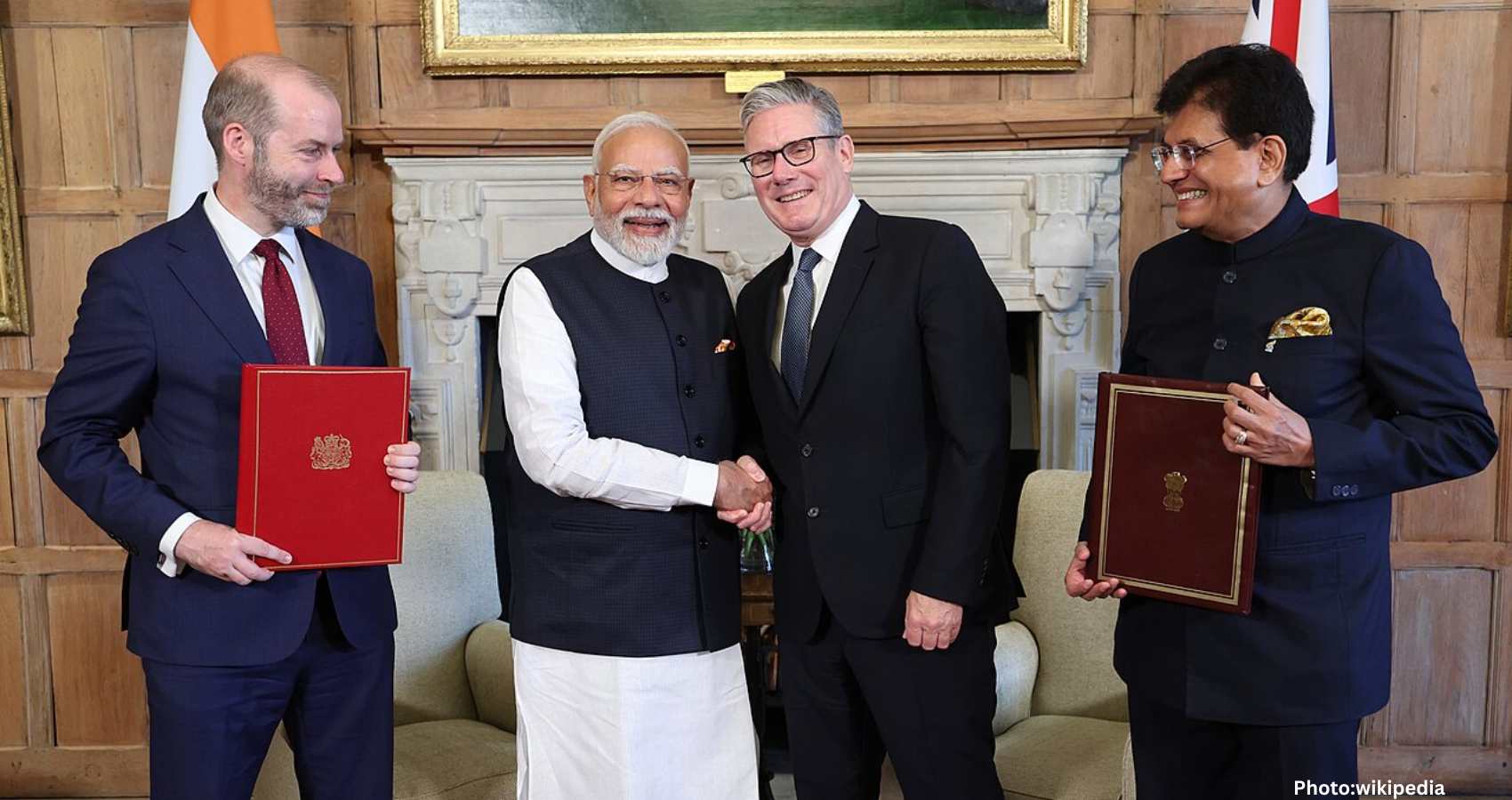The United Kingdom and India have inked a historic free trade agreement projected to bolster their bilateral trade by over $34 billion annually, significantly boosting both economies.
The free trade agreement (FTA), signed on Thursday in the presence of Indian Prime Minister Narendra Modi and UK Prime Minister Keir Starmer, aims to enhance economic collaboration between the world’s fifth and sixth largest economies by reducing tariffs and expanding market access.
The finalized trade pact, which took three years of intense negotiations, addresses crucial issues like visas, tariff reductions, and tax breaks. The urgency to complete the agreement accelerated as global trade scenarios shifted with U.S. President Donald Trump’s tariff policies stirring global markets.
Once fully implemented, the agreement is expected to raise the bilateral trade by £25.5 billion annually by 2040. In 2024, the trade in goods and services between the two nations stood at over £40 billion.
This deal, hailed as a significant achievement by both leaders, promises to provide expansive benefits such as boosting wages, raising living standards, and lowering consumer prices, according to Starmer. Modi praised the agreement as a “blueprint for shared prosperity,” emphasizing the increased access to the UK market for Indian goods such as textiles, jewelry, agricultural products, and engineering items.
The terms of the agreement allow for the elimination or reduction of tariffs on 92% of UK goods exported to India, while up to 99% of Indian goods shipped to Britain will benefit from tariff exemptions. This development is a crucial strategic win for India’s trade position, enhancing market access for sectors previously burdened by high tariffs and regulatory hurdles.
According to Dhiraj Nim, an economist at ANZ Bank, the agreement reflects a strategic triumph for New Delhi’s trade diplomacy, offering Indian goods significant advantages. The UK government anticipates a reduction in the weighted average tariffs on its exports to India from 15% to 3%. However, the agreement awaits ratification by both countries’ parliaments, expected to take several months.
Beyond tariff reductions, the pact includes provisions exempting Indian temporary workers in the UK from paying social security contributions for three years, potentially increasing India’s talent presence in the UK.
The FTA’s impact extends across multiple sectors. For instance, tariffs on UK scotch and gin will be halved from 150% to 75%, eventually dropping to 40% over a decade. Similarly, tariffs on brandy and rum will be initially cut to 110% and further reduced to 75%. The automotive industry will see duties decline to 10% within five years under a quota system, down from the current rates of up to 110%.
Before this agreement, UK goods faced an average duty of 14.6% in India, while Indian goods attracted a 4.2% duty rate, as estimated by Samiran Chakraborty, a Citi Bank economist. This trade pact is among the first signed by India with a developed economy, highlighting the UK’s role in 3% of India’s total goods trade last year, primarily machinery and equipment, followed by textiles and footwear.
Benefiting significant Indian sectors like textiles, gems, and jewelry, the deal is poised to support employment and promote industrial growth in India, noted Nim. As market access improves, India’s trade surplus with the UK could widen over time, though easing UK export barriers might help narrow this gap in the future.
“It is hard to say exactly which direction the surplus would go,” Nim stated, though a rise in overall trade volume is certain.
For both countries, the agreement offers leverage in ongoing negotiations with other trading partners, including the U.S., analysts suggest. Alicia Garcia Herrero, chief economist at Natixis Bank, noted this deal enhances both nations’ positions compared to the U.S.
As London continues to work out the details of its trade pact with the U.S. following an agreement in May, a potential meeting between Starmer and Trump is anticipated during the U.S. President’s personal visit to Scotland.
Economically, the deal is expected to contribute an additional £4.8 billion ($6.5 billion) each year to the UK’s economic output, which was £2.85 trillion in 2024. Modi views this agreement as a strategic opportunity to propel India’s trade discussions with other developed nations, aiming to position India as a competitive and viable trade partner.
As Sameep Shastri, vice president of the BRICS Chamber of Commerce and Industry, articulated on CNBC’s Inside India, the UK agreement signals India’s readiness to engage on equitable trade terms with Western powers, strengthening its global trade voice.
Meanwhile, India is rushing to finalize a trade deal with Washington before August 1 to avoid increased U.S. tariffs scheduled to rise to 26%.

